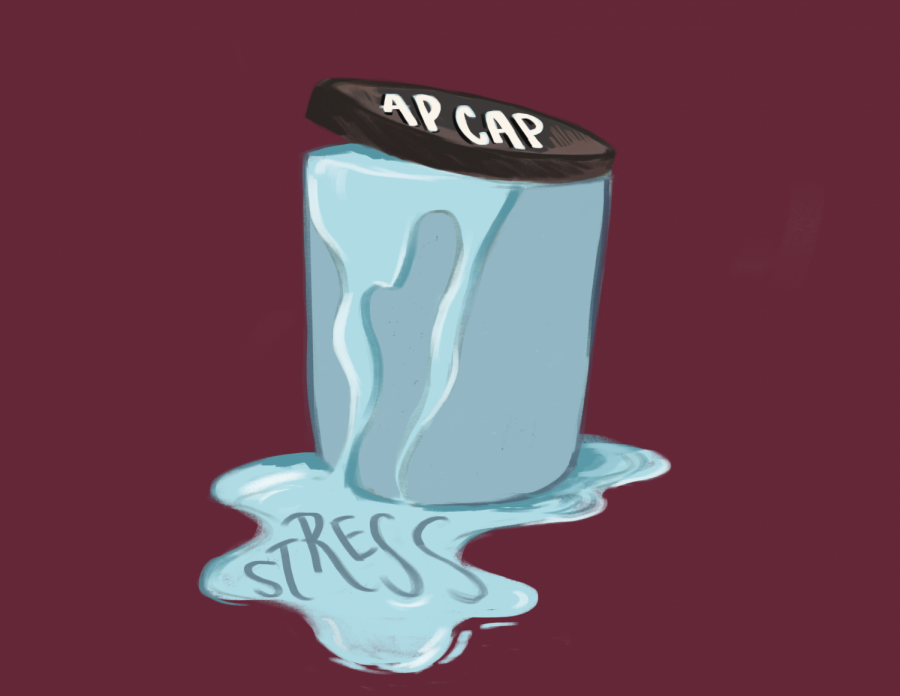Editorial: AP caps won’t solve student stress
Amid a growing conversation about student stress, the idea of an AP cap — a limit on the number of AP courses that students may take — has again come into public discourse. But an AP cap is a surface-level solution that ignores underlying issues and will worsen student stress in the long run.
Los Altos High School culture pushes students to participate in a college applications rat race, piling on taxing course loads and extracurriculars in an effort to stand out from their classmates in college admissions. Unless this attitude is significantly changed, limiting AP classes would have little effect on students’ mental health: Instead of an AP course, they might take up another club, sport or Foothill class. Cultural change doesn’t happen overnight, and we have to take action, but putting an arbitrary limit on AP courses won’t help students, it’ll just push them to different resume-builders.
And given the general emphasis on STEM courses at LAHS, it’s likely that students will drop humanities APs in favor of math and science, should an AP cap be implemented. Many students will lose out on their last opportunity to take a challenging humanities class, as many will skip out on that during college.
Rather than implementing generalizing course restrictions, we should be encouraging students to use the resources at their disposal to make informed academic decisions. Students often believe they already know what classes they should be taking, but they should carefully consider their course load before picking classes. Teachers and administrators have ensured student access to class information — students just have to take advantage of it.
To support students, the school should mandate counselor meetings dedicated to class choices for those with four or more AP classes after classes are chosen with the option to change their choices after the meeting. Currently, counselor meetings are often after the class registration deadline when students cannot change their classes, so if a student genuinely has a change of heart, there is little they can do till the beginning of the school year. If we are to make these meetings meaningful, students have to be encouraged to reassess their options.
There should also be standardized question and answer sessions for these classes with students and teachers. While the quick videos and course information sheets are helpful, talking directly to students one-on-one can help make more informed decisions. Students are more likely to listen to a fellow student because they have more applicable experience. In the past, many different variations of information sessions have been attempted but students often do not feel as though they would be useful or that they are encouraged to go and they were not uniformly publicized.
And if the school wants to send a clear message to all students on incorporating wellness into their academic decisions, there are less intrusive ways to do so. Promoting non-binding limits on AP classes, such as the maximum of two per year suggested by the Palo Alto Unified School District, may provide a reality check to students who do not realize the difficulty of these course loads.
We don’t believe piling on APs is a good option for most students but that doesn’t mean an AP cap is the solution. Students have to realize the consequences of their actions and make their choices accordingly.



